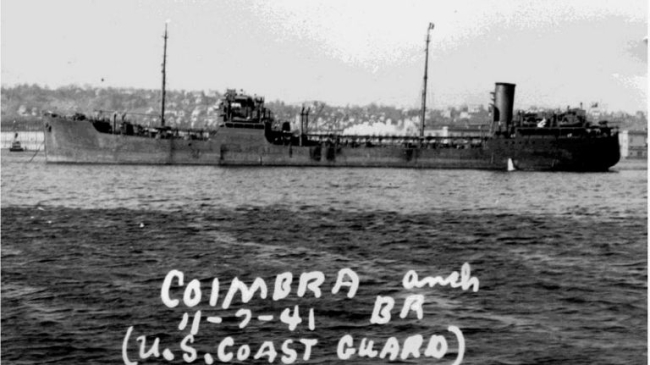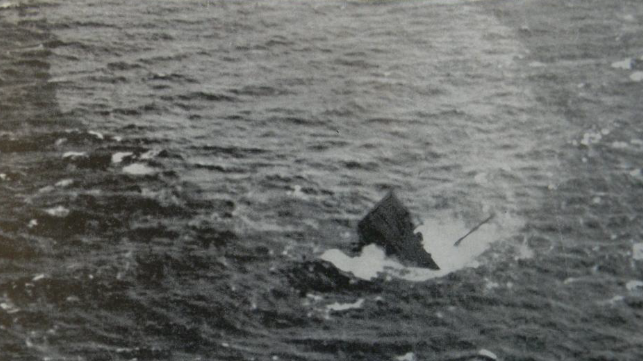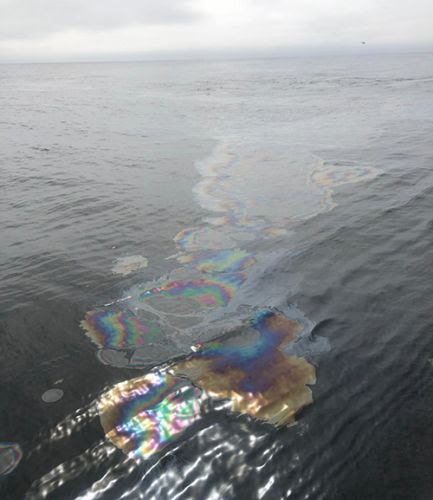
Oil spill prevention takes many forms, including improved vessel designs, navigation improvements, and addressing human factors to reduce crew mistakes. Cumulatively, these efforts have significantly reduced the number of both minor and major accidents, but spills are still a threat.
When a ship runs aground and begins leaking, often the first priority is to keep as much of the oil as possible inside the ship. Once oil enters the water, even with the latest technology, cleanup efforts may only recover 10 to 15% of the spilled oil.
Did you know that salvors kept three-quarters of the Exxon Valdez’s cargo from spilling into Prince William Sound? Keeping oil on the ship until it can be safely unloaded is the best way to protect the environment, and far more efficient and cost-effective than trying to chase after and recover spilled oil.
Prevention efforts have reduced recent ship sinkings, but what about the thousands of historical shipwrecks in U.S. waters? Many of these sit out of sight, damaged, collapsed onto the seabed—some threatening to leak their oil cargo or fuel. Is there a way to prevent spills from ships that have already sunk? Improvements in underwater technologies now allow salvage companies to safely conduct oil removal operations from sunken ships, but where to start?
Most sunken wrecks are not oil pollution risks; their oil was lost years ago, often lost catastrophically when ships were sunk during wartime or lost due to corrosion and decay. But we know some of these wrecks still have oil onboard, sheening periodically as these wrecks deteriorate. Which ships are the priority for underwater interventions? The answer starts with historical research and a database.
In 2010, Congress appropriated $1 million to NOAA to review and prioritize the potentially polluting wrecks in U.S. waters, including the Great Lakes. OR&R’s Emergency Response Division and the NOAA Office of National Marine Sanctuaries worked with the U.S. Coast Guard and other partners to review some 20,000 wrecks and identify those that most likely still contained significant volumes of oil.
The project, known as the Remediation of Underwater Legacy Environmental Threats (RULET), was completed in 2013 and identified 87 high-level risk wrecks. Over the past decade, NOAA and the Coast Guard have been slowly working through the list of wrecks. Several of the high-profile wrecks have been assessed and successfully remediated, preventing oil from spilling into the environment. Examples include:
Sunken Barge Argo in Lake Erie
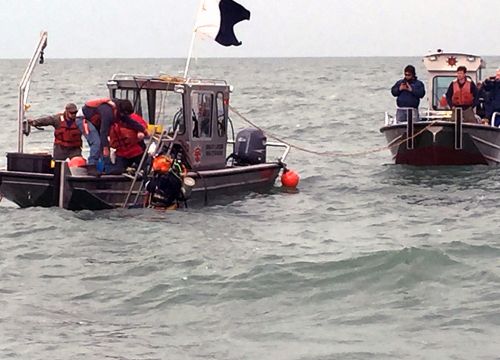
On Oct. 20, 1937, the tank barge Argo foundered in a storm and sank in western Lake Erie. At the time of the sinking, the barge was reportedly loaded with 4,762 barrels of crude oil and benzol. The vessel was identified in the 2013 NOAA database as a potential pollution threat, but the exact location of the wreck was unknown. It was thought to have sunk on the Canadian side of the maritime border. In 2015, however, recreational divers researching wrecks from the War of 1812, discovered a sunken barge in the general location, but on the U.S. side of the border. Based on the wreck’s age, construction, and dimensions, it was thought to be the Argo. Later side-scan sonar survey imagery confirmed the wreck dimensions and showed the wreck to be intact.
In late October 2015, the Coast Guard directed a diver survey of the sunken tank barge, and an active plume of pollution originating from the sunken tank barge was observed. Subsequent investigations by a Coast Guard small boat team and overflight discovered a strong solvent odor and discolored surface water. With the discovery of an active release from the tank barge, the Coast Guard shifted into an emergency response posture. NOAA supported the Coast Guard federal on-scene coordinator with scientific support, information management, and Environmental Unit leadership.
In preparation for underwater lightering, the Coast Guard obtained samples from the leaking barge. Laboratory results indicated the product was not oil, but benzene, a much more hazardous material. This required specialized offloading equipment and a vapor control system. With all systems in place, pumping began in late November 2015. Approximately 49,000 gallons of contaminated water, including 1,600 gallons of benzene, were safely offloaded, preventing this material from contaminating the Great Lakes.
WWII British Steam Tanker Coimbra
The 422-foot Coimbra was torpedoed and sunk off Long Island, New York on Jan. 15, 1942 by U-123 during the WWII Battle of the Atlantic. As it plunged to its final resting place approximately 30 miles south of the Shinnecock Inlet, it carried with it an estimated 2.7 million gallons of oil. Some of the oil on board spilled or burned immediately following the incident, but an unknown amount remained, and over the years, divers and fishermen reported seeing sheens coming from the site of the Coimbra. Based on its location and cargo, and reports of episodic sheens, the wreck was identified as one of the highest priorities in the RULET database. NOAA satellite imagery also showed chronic sheens at the wreck location.
In 2019, the Coast Guard contracted with Resolve Marine Group to conduct a full assessment of the oil remaining on the Coimbra wreck. Substantial oil was found during the assessment, triggering removal efforts. After a three-month effort, approximately 450,000 gallons of oil were safely removed from the wreck. Had the underwater intervention not occurred, this oil would have ultimately leaked into the environment.
WWII Steam Tanker Munger T. Ball in Florida
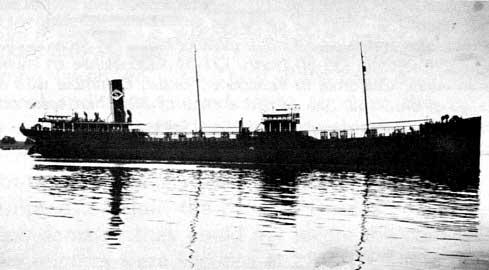
On May 5, 1942, the American Steam Tanker Munger T. Ball was hit twice by torpedoes and machine gun fire from the German U-507 about 80 miles northwest of Key West, Florida. The vessel sank within 15 minutes of the second hit. In June 2021, following reports of intermittent oil sheens in the area, the Coast Guard, the U.S. Navy, NOAA, the Maritime Administration, with the contract salvage company, Resolve Marine Group, conducted an assessment of the source.
For many years, the wreck at that location was thought to be that of the American Steam Tanker Joseph M. Cudahy, a vessel that was hit the same day by torpedoes from U-507, but the marine archeological study done as part of the recent assessment ultimately helped to uncover the actual identity of the vessel as the Munger T. Ball. Using divers and remote operated vehicle technology, the assessment determined that while most of the oil on board had likely burned or been released, some of the tanks still contained oil. The mitigation efforts involved safely removing the remaining 35,00 gallons of oil product from port tanks 4, 6, and 7, concluding a 40-day coordinated response on July 16, 2021.
It’s Not Just Leaking Oil
The RULET study produced an important database of the most potentially environmentally hazardous wrecks. That data allows us to monitor those sites—through U.S. Coast Guard and National Response Team reports, as well as surveillance by high resolution visible satellite imagery produced by the Satellite Analysis Branch of NOAA’s Satellite and Information Service.
Knowing what and where these underwater threats are helps us to meet our goal of avoiding a catastrophic release from any of these vessels.
Related Articles:
- Using NOAA Tools to Help Deal with the Sinking Problem of Wrecked and Abandoned Ships
- When Boats Don't Float: From Sunken Wrecks to Abandoned Ships
- Peeking Inside the Anatomy of a Derelict Vessel
- When Boats Don't Float: How the NOAA Marine Debris Program Works to Remove Sunken Vessels
- Abandoned and Derelict Vessels
- NOAA Marine Debris Program: Abandoned and Derelict Vessels Info Hub
- NOAA Contributes to U.S. Coast Guard Mission to Recover Oil from Sunken WWII Vessel

